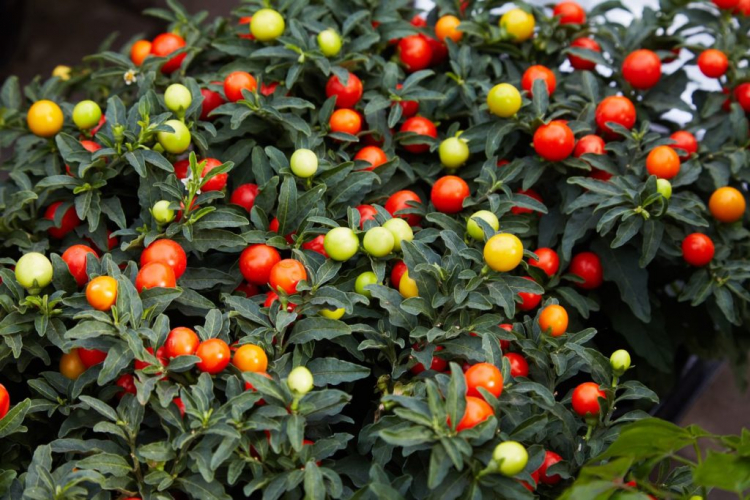Coral Plant (Solanum Pseudocapsicum): Care And Properties
Maintaining the coral plant ( Solanum pseudocapsicum ): Tips for overwintering and multiplying. We also provide information on the toxicity and flowering of the coral bush.
During the cold season, when it gets monotonous and uncomfortable outside, the bright fruits of the coral bush ( Solanum pseudocapsicum ) offer a colorful change from the dreary gray on the doorstep. The tropical plant is not only a real eye-catcher in the winter months but also shows itself in the pretty flower dress in summer.
Coral plant: origin and characteristics
Table of Contents
The coral plant came from tropical Central and South America to the German-speaking area as early as the 16th century. The dwarf shrub belongs to the nightshade family ( Solanum ), so it is closely related to tomatoes, chili, and potatoes. Its German name coral bush or coral tree causes some confusion because the coral tree ( Erythrina ) is sometimes referred to as a coral bush. However, both types have nothing to do with each other.
Coral plants grow up to a meter tall and are evergreen. Their leaves are elongated and very similar to those of chili plants. The one to two centimeters large fruits, which change color from yellow to red-orange as they ripen, is a clear distinguishing feature.

Is the coral plant poisonous?
Like many nightshade plants, the coral plant also contains a poisonous alkaloid. The solanocapsin contained in the berries is poisonous and very similar to the solanine, which is widely known as green potatoes. The fruits of the coral bush are therefore not edible. Consumption can even lead to gastrointestinal complaints such as diarrhea, vomiting, and nausea. Fortunately, the poison is not life-threatening, but it is extremely unpleasant.
It is better to keep the plant out of the reach of children because the small red berries look very similar to cherry tomatoes and could therefore be particularly tempting to curious children.
Coral plant: flowering time
Coral bushes bloom in summer, usually from June. The white flowers with the yellow stamens are strongly reminiscent of the flowers of the potato or tomato, with which the coral plant is also closely related. If you keep your coral bush indoors all year round, you should shake the plant gently from time to time during flowering to ensure pollination. Because only pollinated flowers can later develop into fruits.

Plant coral bush
The coral plant is not hardy and does not tolerate frost. For this reason, it cannot be planted out here, but it is ideal as a pot plant. During the summer it likes to be outside in the sun, but it should be brought in before the first frost. The best time to plant and repot is in the spring after the fruit has fallen. Ordinary garden soil is suitable as a substrate.
You might so like: Dwarf Fruit Trees: Grow Patio Trees In Your Own Garden
Maintain coral plant
Usually, coral plants are only kept during the cold season and then disposed of. Coral bushes can live up to ten years. Multi-year cultivation not only pleases the plant but also makes much more sense in terms of resources. Young coral plants are cheap to buy, but some energy and resources are used for their production. In addition, the maintenance of the undemanding plant is very easy.
Cut the coral bush
After the crop has lost its fruit, pruning is required. Simply prune the plant a little so that it stays nice and compact. However, be careful not to cut too late. Because if you accidentally remove the buds and flowers, no fruit will develop this year.
Fertilize the coral plant
Coral plants do not need excessive fertilization. For the sake of the environment, it is better to use mainly organic fertilizers with long-term effects, such as our Plantura organic tomato fertilizer. This offers your coral bush an optimal nutrient ratio and, with its high content of potassium, ensures optimal fruit development. Just add a little fertilizer to the pot in spring and work it in carefully.
You might so like: Japanese Fatsia
Propagate coral plant
The propagation of the coral bush is very easy. The fastest way to propagate is of course via cuttings. To do this, use the twigs that arise when pruning in spring and remove the leaves from the lower area of the twigs. Now all you have to do is put the finished cuttings in moist potting soil and then wait. If you keep the soil moist, the cuttings will soon take root and develop into independent coral plants.
But coral bushes can also be sown without any problems. You can either sow the seeds fresh or use dried seeds. These are best sown between mid-December and the end of February. Fruits will only develop in the second or third year.

Hibernate coral plant
Coral plants can be overwintered relatively warm. The plants feel particularly comfortable at temperatures between 12 and 15 ° C. The cool temperatures promote the fruit set and the coloring of the fruit. The location should be as bright as possible because lack of light can lead to leaf fall. When overwintering in a warm living room, it is possible that aphids ( Aphidoidea ) become a problem, as the plants are then weakened by the unfavorable wintering conditions.
During the winter you shouldn’t fertilize your coral bush and you should also reduce the watering a little. However, water the plant regularly so that the soil does not dry out completely. However, keep in mind that less water evaporates in cool temperatures.






